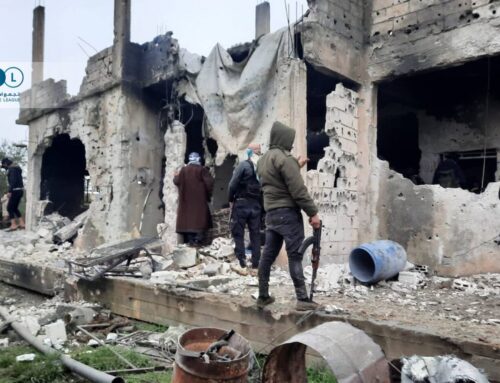‘Regime control of Qalamoun is frightening, very frightening.’
November 24, 2013 Since November 15th, Syria’s Qalamoun mountain range […]
24 November 2013
November 24, 2013
Since November 15th, Syria’s Qalamoun mountain range has witnessed increasingly violent clashes as the Assad government seeks to advance into the strategically vital region along Syria’s western border with Lebanon and secure its route from Damascus to loyalist enclaves in Latakia, on the Mediterranean Coast. Rebels, meanwhile, need the area for its proximity to sympathetic Sunni towns across the border with Lebanon, and its supply routes to other parts of Syria. Tens of thousands of rebel troops massed in the Qalamoun region following their defeat in the border city of Qusayr on June 8th, and have bracing for a regime offensive since.
After a five day aerial and artillery campaign, government troops moved into the town of Qara, which lies just west of the Homs-Damascus highway. The offensive provoked a humanitarian outcry, forcing an estimated 18,000 Syrian citizens to flee across the Lebanese border into the Sunni town of Arsal. Rebel troops pushed back Wednesday, claiming partial control of the town of Deir Attiyeh, ten kilometers south of Qara on the Homs-Damascus highway and which the regime had patrolled since the start of the revolution.
Syria Direct’s Mohammed Rabie spoke with Amar, a 23 year-old opposition spokesperson at the Qalamoun Media Center, about why regime control of the border zone is a frightening prospect for the Syrian opposition.
What would it mean for the FSA to lose Qalamoun?
Losing Qalamoun means losing the back line of the revolution in Damascus and its suburbs; there won’t be anyone to protect the revolutionaries from behind in this area, and the regime is trying to to prevent the FSA from moving toward the capital. But the regime won’t be able to take Qalamoun. Regime control of Qalamoun is frightening, very frightening.
Why did the regime launch such a focused campaign to take control of Qara?
The regime is trying to achieve victories wherever possible. You can see that there’s this big media campaign around “The Battle for Qalamoun,” just as there was one around the battle for Qusayr. There was Geneva 1, but when the regime took Qusayr and began presenting itself as militarily dominant, Geneva 1 failed.
Assad is trying to do this again today, he wants to achieve the strongest military position possible to repeat the Geneva 1 scenario. You may have noticed that today, whenever the regime takes control of an area–even just a neighborhood.
How is the regime managing to make these major military advances right now? Is it implementing new strategies?
There is a great deal of betrayal taking place within the FSA–or within rebel brigades. I don’t consider them part of the FSA. There is a significant presence from regime loyalists and from the security services within rebel brigades. There are whole brigades working for the regime, not just individuals. So in the battle for Qara, the brigades loyal to the regime and pretending to fight with the FSA withdrew from their front, leaving it exposed, and we lost the battle.
An opposition fighter poses in a cave in Qalamoun’s mountains. Photo courtesy of Qara LCC.
What’s happening now in Qalamoun?
There’s currently a very violent battle taking place along the Damascus-Homs highway. The FSA announced the highway a military zone. The highway is the regime’s one lifeline; previously, if the FSA fired one bullet toward the highway, the regime would cut food supplies to the villages along the highway for about ten days.
What happened in Qara? How did the regime take the town?
The FSA betrayed us; they let the regime take over the town. Qara is a weak point in Qalamoun: it’s all civilians, with no focus on military issues. The FSA wasn’t ready for the confrontation there. The regime started its campaign from several fronts on November 15; Qara is a weak point because it can be besieged from multiple sides, including Lebanon, but it’s also hard to penetrate because it’s all mountains. Regime forces encircled the city from the Damascus-Homs highway [to the East], and from the North, where Hezbollah troops were participating; this northern front was the most critical one.
There was a brigade from the Army of Islam responsible for defending the Northern front, and there were other brigades in other areas. What happened was that the Army of Islam brigade withdrew, taking with it Konkurs missile launchers, but nobody knew why they withdrew! This is betrayal, they withdrew without telling anyone and took missile launchers with them–those missiles were the basis of Qara’s defenses. We asked them to give us the missile launchers, but they didn’t; there is now an inquiry into what happened there.
Regime tanks started driving through the village in addition to heavy bombardment from surface to surface missiles, and all rebels were forced to withdraw.
Where are Qara’s civilians now?
They fled to Arsal [a majority Sunni community in Lebanon] and Deir Attiyeh. There were a huge number of them.
Like Syria Direct on Facebook or follow us on Twitter.







